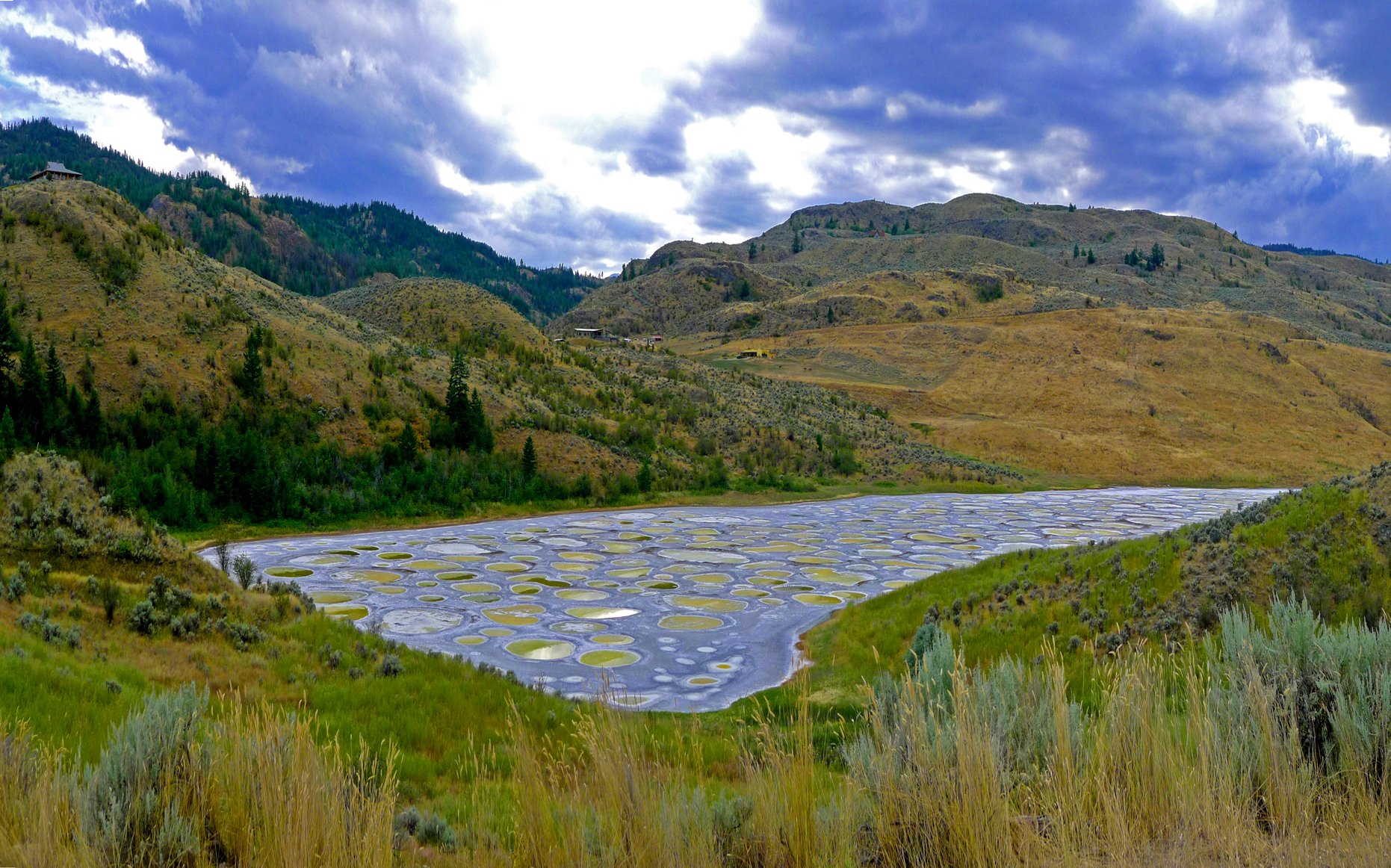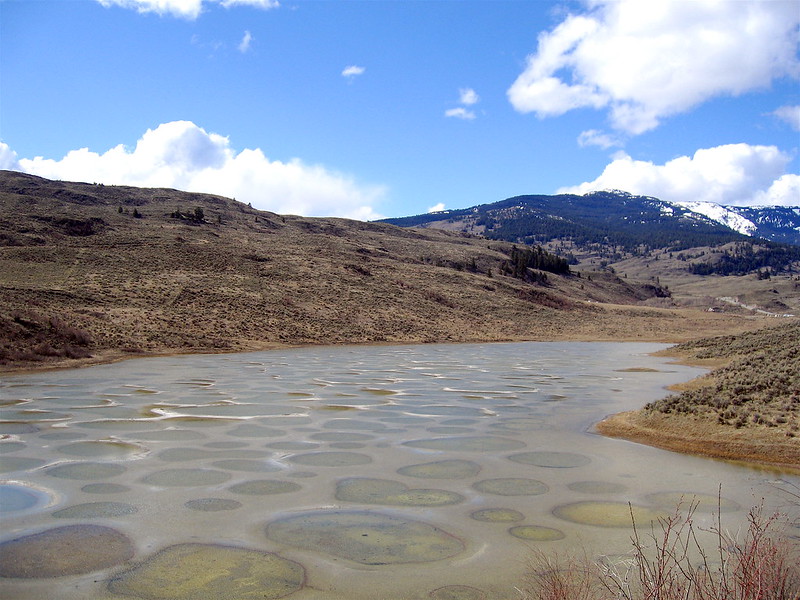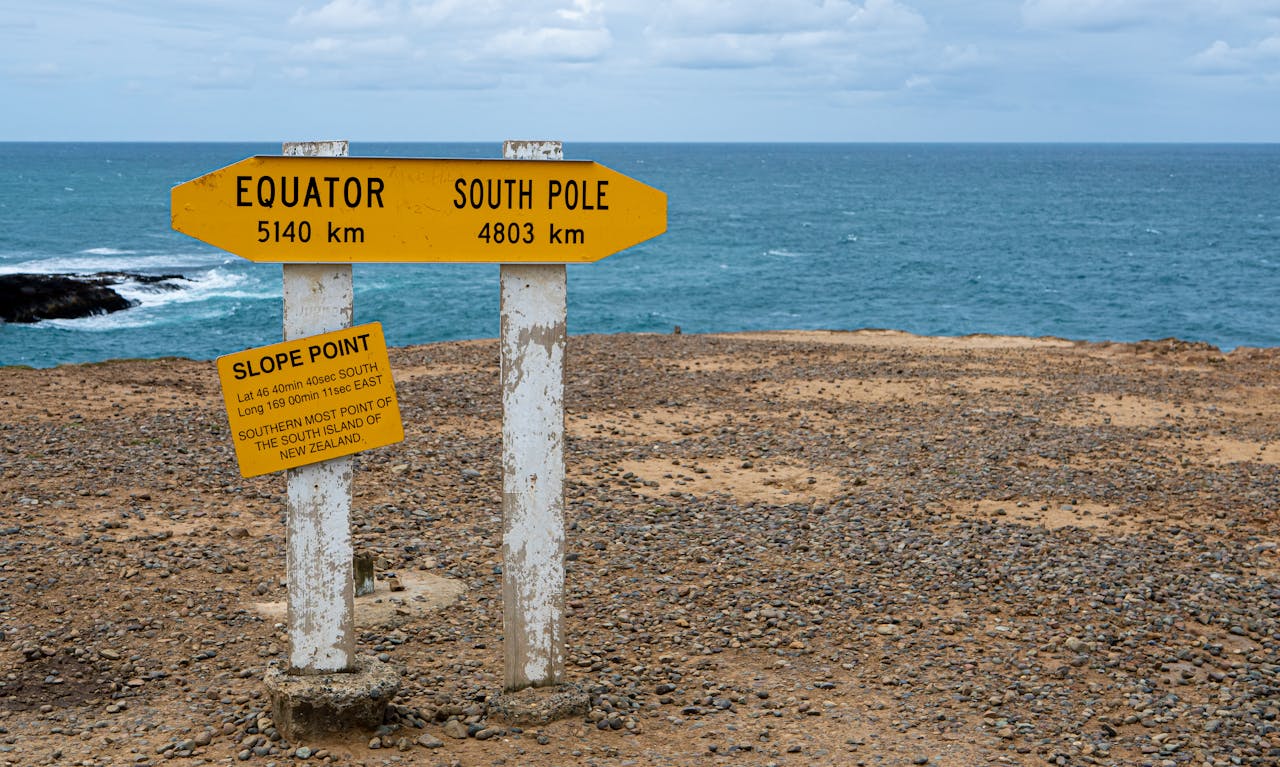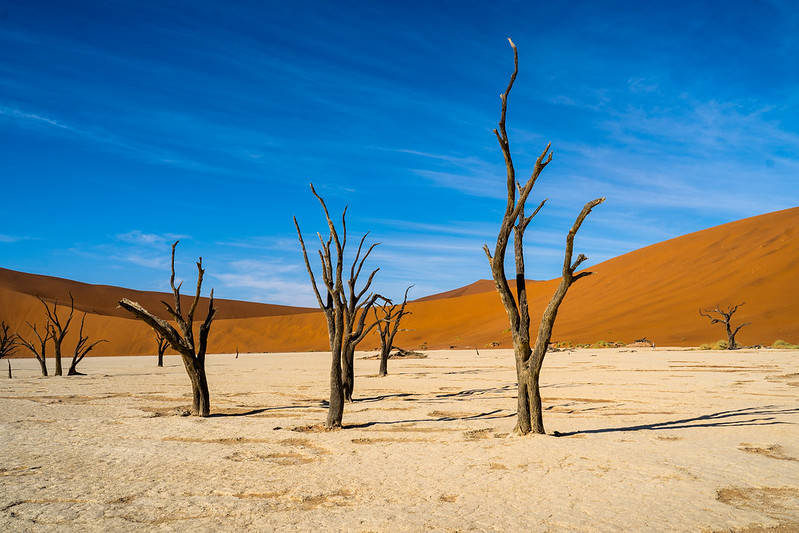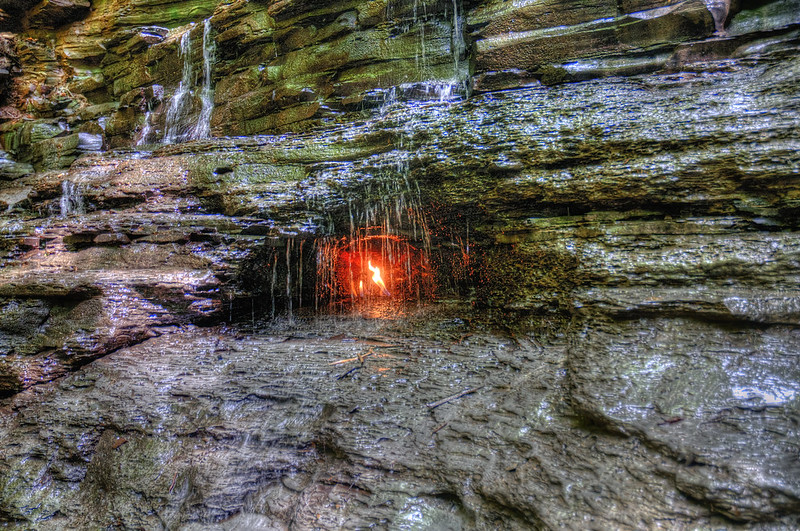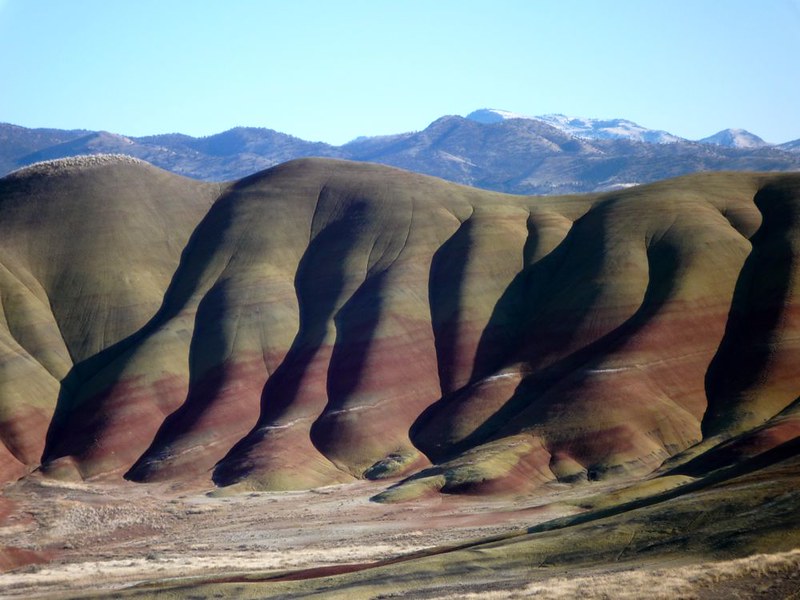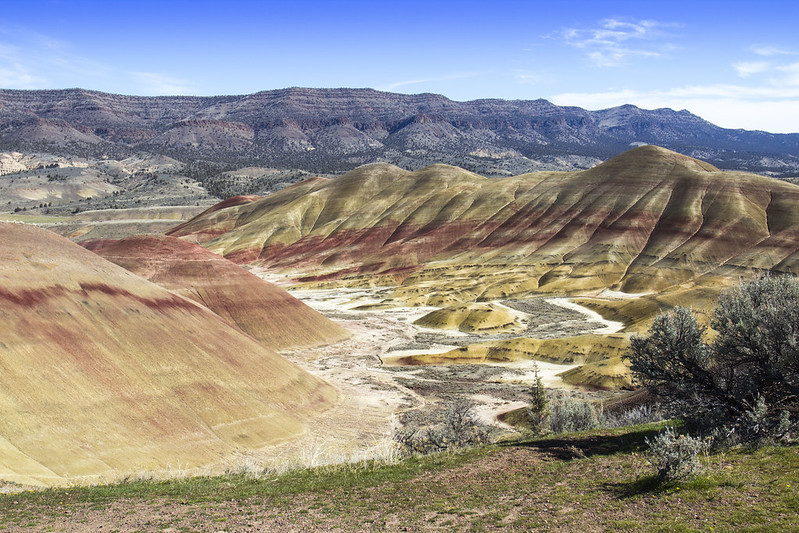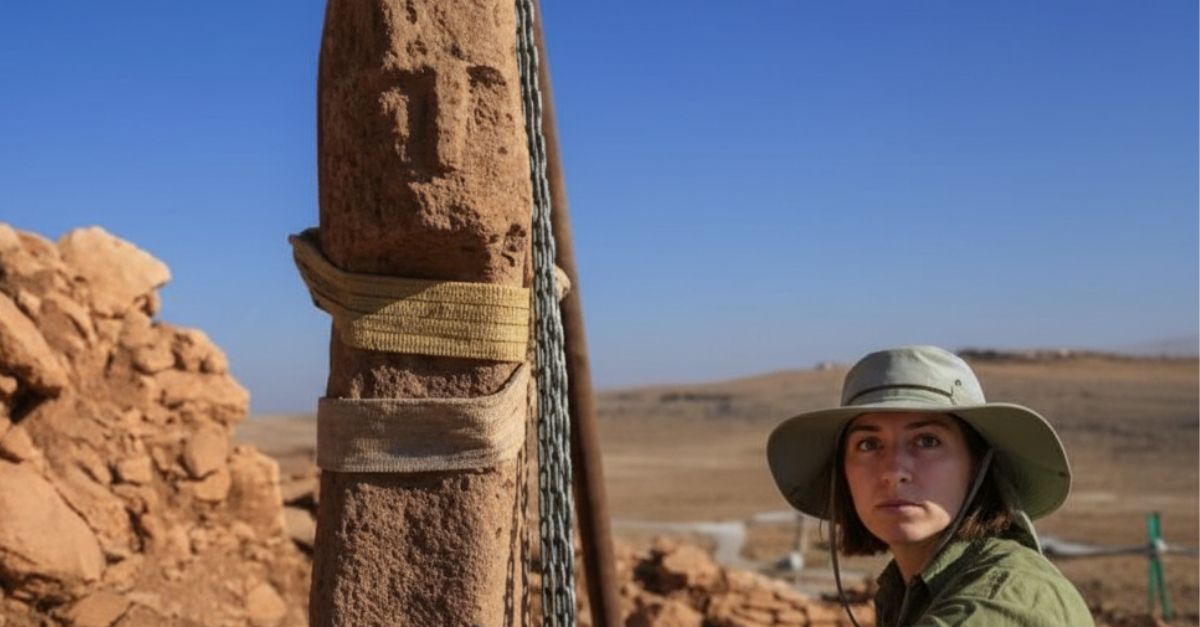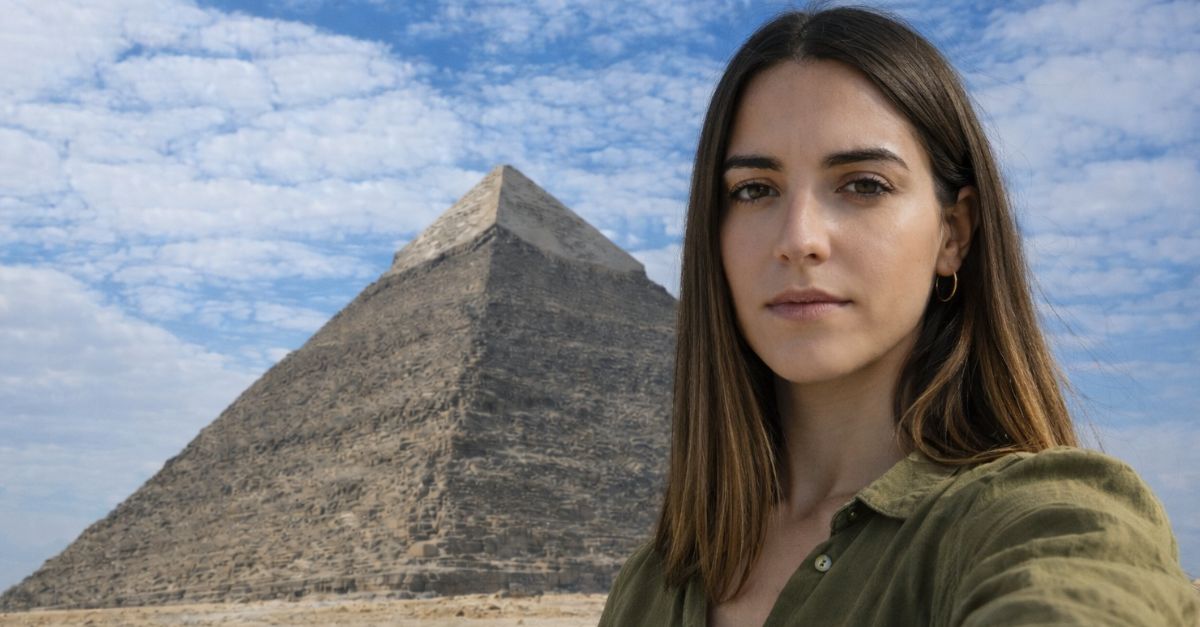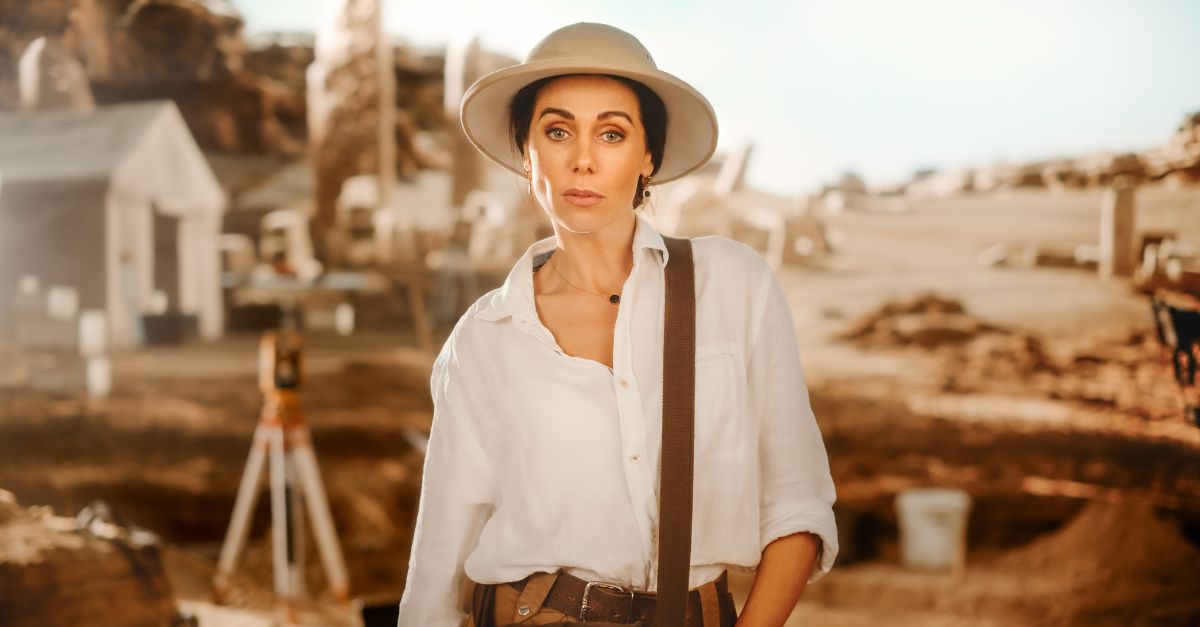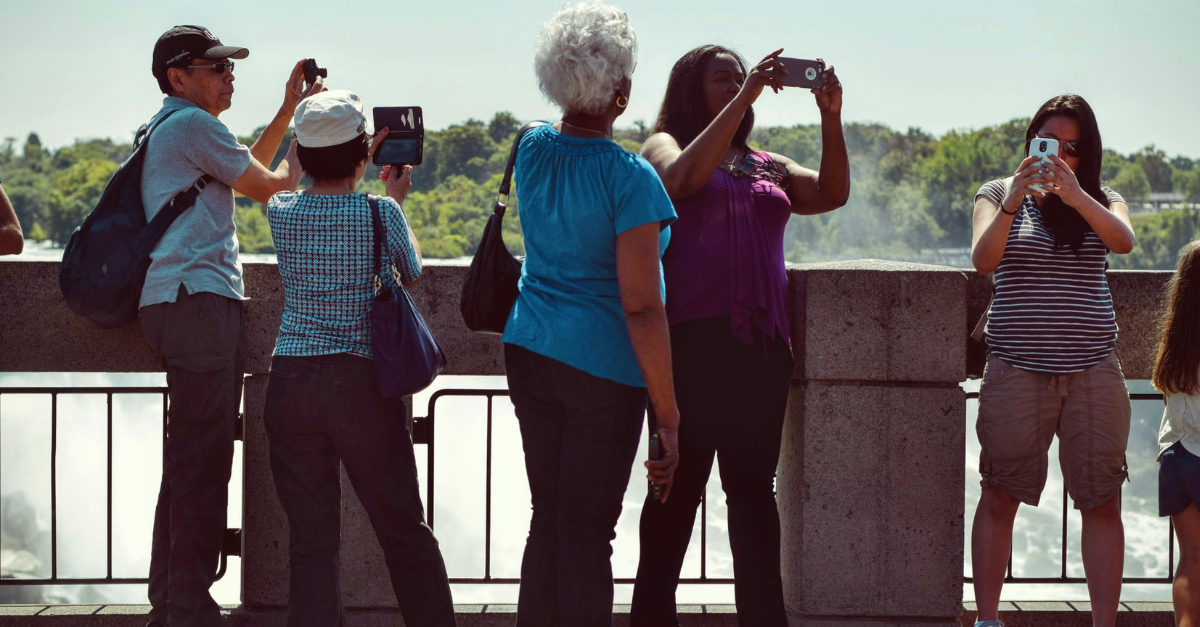A Unique Perspective
The world is full of surprises—some so strange they seem to defy logic. From glowing waters to upside-down lightning, nature has a flair for the dramatic. Here are 15 of the most bizarre and fascinating natural phenomena our planet has to offer.

Salar De Uyuni
Located in Bolivia, the Salar De Uyuni is the largest salt pan in the world. And when a thin film of water gathers on the surface it is also the world’s largest natural mirror.
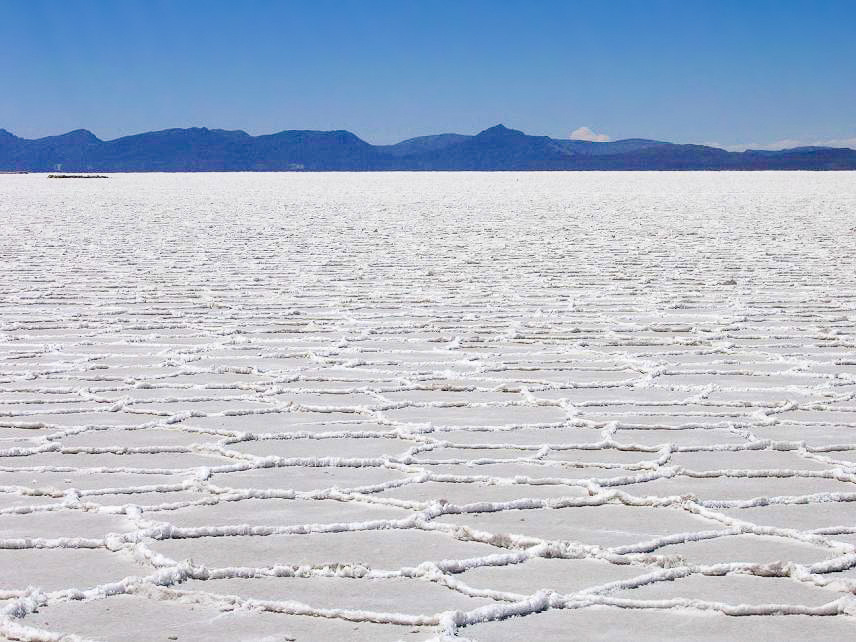 Anouchka Unel, Wikimedia Commons
Anouchka Unel, Wikimedia Commons
How It Formed
Salar De Uyuni is the remains of a prehistoric lake that dried up and left behind void space of bright-white salt, rock formations, and cacti-islands.
The best time to visit is during the months of July and October
 Marquex bol, CC BY-SA, Wikimedia Commons
Marquex bol, CC BY-SA, Wikimedia Commons
Lake Natron
Lake Natron is located in Tanzania and it is known as one of the scariest lakes in the world because it turns birds and animals into stone.
 Richard Mortel, CC BY 2.0, Wikimedia Commons
Richard Mortel, CC BY 2.0, Wikimedia Commons
What It Is
Lake Naton is a high salt and high alkaline lake. The alkalinity of the lake can reach a pH level of greater than 12. When animals come into contact with the water, calcium starts to accumulate in their body tissue—which is called calcification—essentially turning them into stone.
Die Rakotzbrück
The Rakotzbrücke, also known as the Devil’s Bridge, is one of Germany’s most enchanting oddities. Built in the 19th century, it’s celebrated for its eerie precision—the way its arch reflects in the still water below creates a flawless, otherworldly circle that feels almost too perfect to be real.
 WilliWonka121, CC BY-SA 4.0, Wikimedia Commons
WilliWonka121, CC BY-SA 4.0, Wikimedia Commons
Restricted Access
While the bridge is still very popular with tourists, no one is actually allowed to walk on it. Even so, its fairy tale look draws in tons of visitors each year.
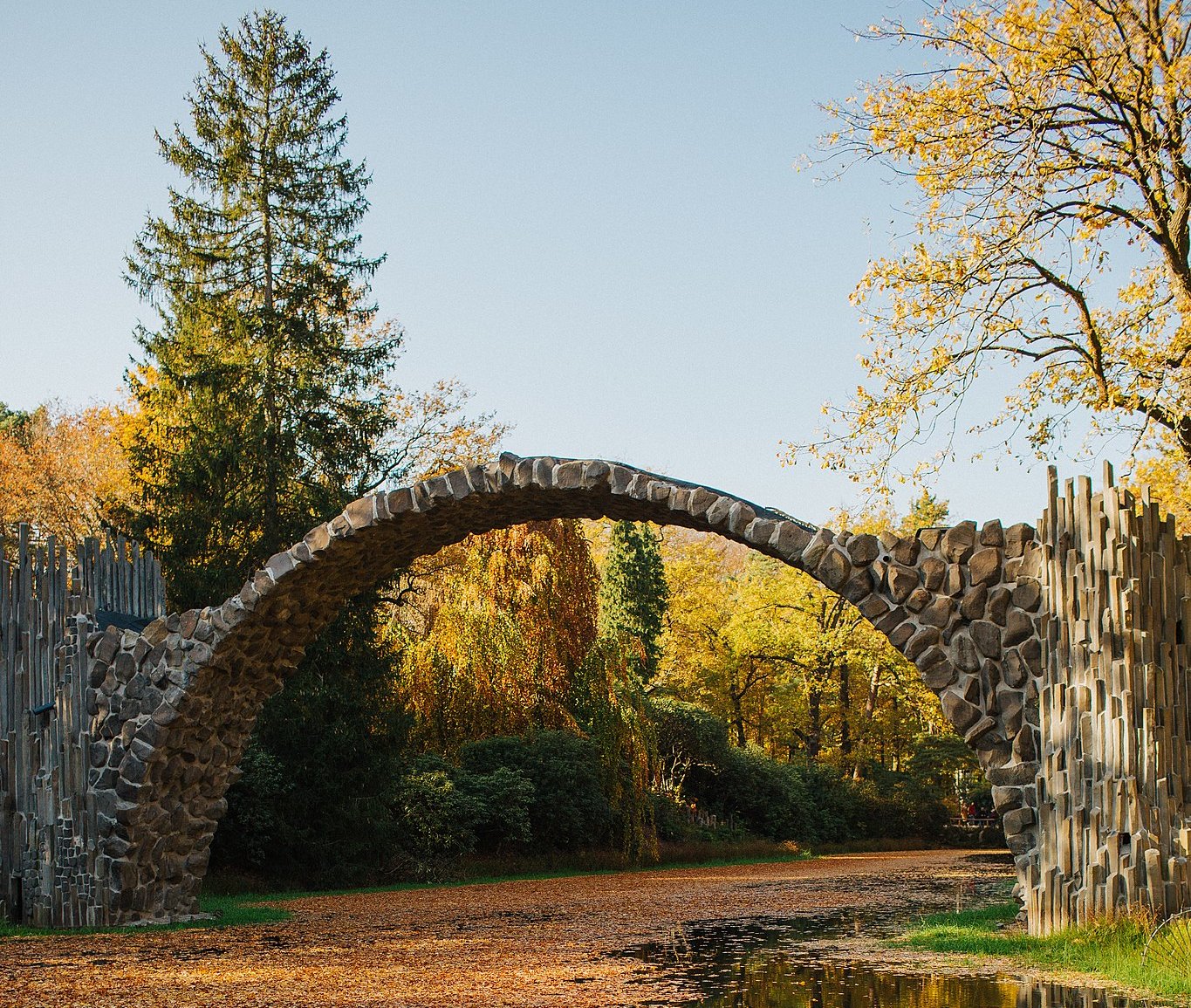 Khrystyna Mogyliuk, CC BY-SA 4.0, Wikimedia Commons
Khrystyna Mogyliuk, CC BY-SA 4.0, Wikimedia Commons
Spotted Lake Khiluk
Spotted Lake Khiluk is located in British Columbia and is the most mineralized lake in the world. The lake is spotted with 365 separate pools arranged in a strange mosaic-like pattern.
Healing Powers
Each of the spots holds a concentrated chemical content and is said to actually cure different diseases. In fact, it is a sacred site known to First Nations People for its miraculous healing powers.
Slope Point
Slope Point is in New Zealand is another one of the world’s strangest places. The forest here is home to trees that are permanently twisted.
Extreme Winds
These trees look like nature’s own sculptures—permanently bent and twisted by relentless Antarctic winds. The area ranks among the windiest spots on Earth, and the trees’ dramatic shapes stand as living proof of just how powerful those gusts can be.
Deadvlei
Located in Namibia, the name Deadvlei means “dead marsh”, and it is a forest of sun-blackened unalive trees that sit in a white clay pan which is basically a dried oasis.
 Olga Ernst & Hp.Baumeler, CC BY-SA 4.0, Wikimedia Commons
Olga Ernst & Hp.Baumeler, CC BY-SA 4.0, Wikimedia Commons
A Desert Oasis
The lack of water in the extreme heat forces the roots of trees to come outside looking for moisture. Not only is the area surrounded by rust-orange giant sand dunes, but they’re also the highest sand dunes in the world.
The Underwater Park
Another one of the world’s weirdest places is this underwater park. Located in Austria, this park goes completely underwater during the spring.
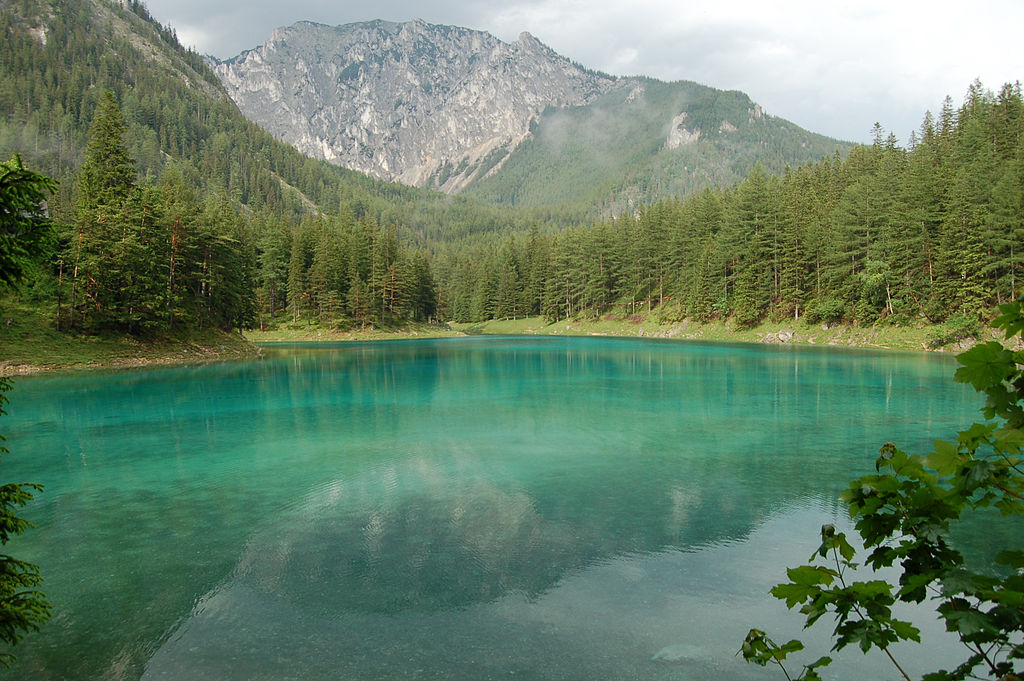 Herzi Pinki, CC BY-SA 3.0, Wikimedia Commons
Herzi Pinki, CC BY-SA 3.0, Wikimedia Commons
A Scuba Diver’s Dream
During the winter, everything is normal and the lake is surrounded by a county park. But the park is also surrounded by mountains, so in the spring, the valley below fills with clear blue water sending the entire park deep underwater—making it a popular scuba diving spot.
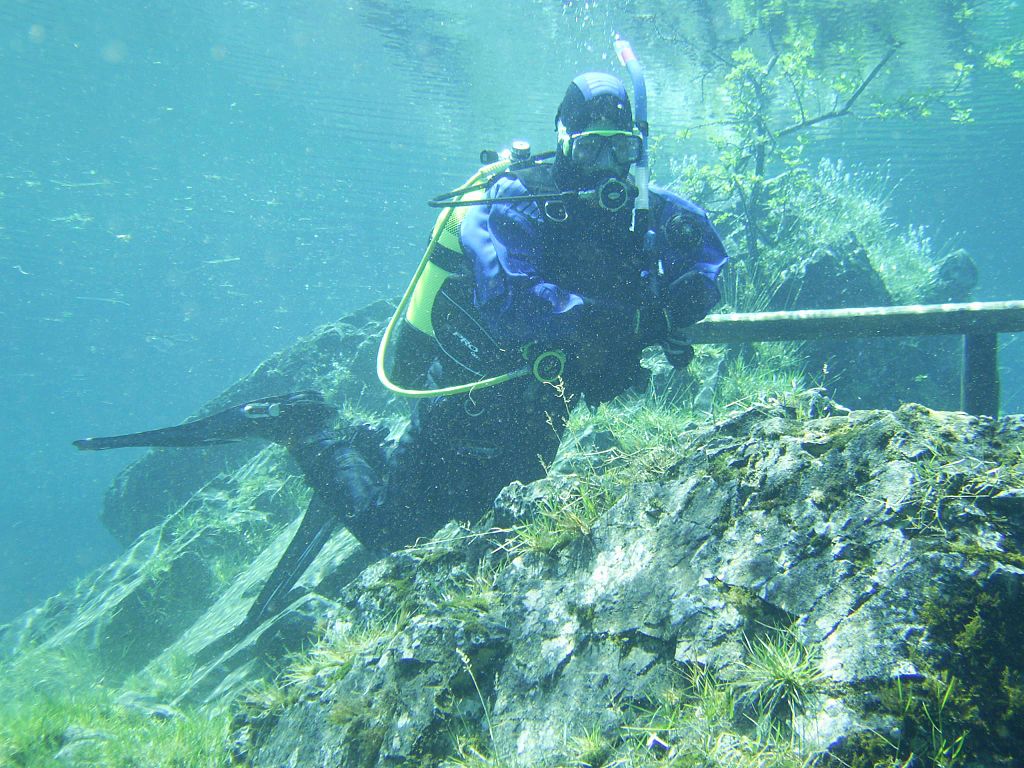 TauchSport_Steininger, CC BY 2.0, Wikimedia Commons
TauchSport_Steininger, CC BY 2.0, Wikimedia Commons
Eternal Flame Falls
One of nature’s coolest party tricks, Eternal Flame Falls in New York hides a flickering secret. Behind its gentle cascade burns a small, steady flame—fueled by natural gas seeping from the rocks—that glows year-round, even as water rushes right over it.
 Mpmajewski, CC BY-SA 3.0, Wikimedia Commons
Mpmajewski, CC BY-SA 3.0, Wikimedia Commons
What Causes the Flame
The flame is fueled by natural gases that emit from the base of the waterfall. The flame can sometimes be extinguished, but can be relit. It will continue to burn for very long periods of time.
The Tunnel of Love
In a section of industrial railway in Urkraine is this green leafy tunnel that looks like something out of a fairy tale. It is known as being a favorite place for couples to go for romantic walks.
 Myroslava Rakovets, CC BY-SA 3.0, Wikimedia Commons
Myroslava Rakovets, CC BY-SA 3.0, Wikimedia Commons
How It Grew
The Tunnel of Love was originally built for military purposes. It was disguised by planting trees all around it, which in time grew so much that they took over a 4.9km stretch.
 DmytroChapman, CC BY-SA 4.0, Wikimedia Commons
DmytroChapman, CC BY-SA 4.0, Wikimedia Commons
Christ of the Abyss
In Italy, a 2.5-meter-tall bronze statue of Jesus Christ sits completely submerged underwater, making it a top tourist attraction for scuba divers.
How It Got There
Crafted by artist Guido Galletti, the Christ of the Abyss statue rests beneath the waves of the Mediterranean Sea. It was placed there in 1954 to honor Dario Gonzatti, the first Italian to use scuba gear. Standing 17 meters underwater, the bronze figure of Jesus with outstretched arms still watches serenely over the deep to this day.
The Silfra Rift
The Silfra Rift, one of the most obscure places in the world separates two continents and two tectonic plates, namely the North American and Eurasian plates.
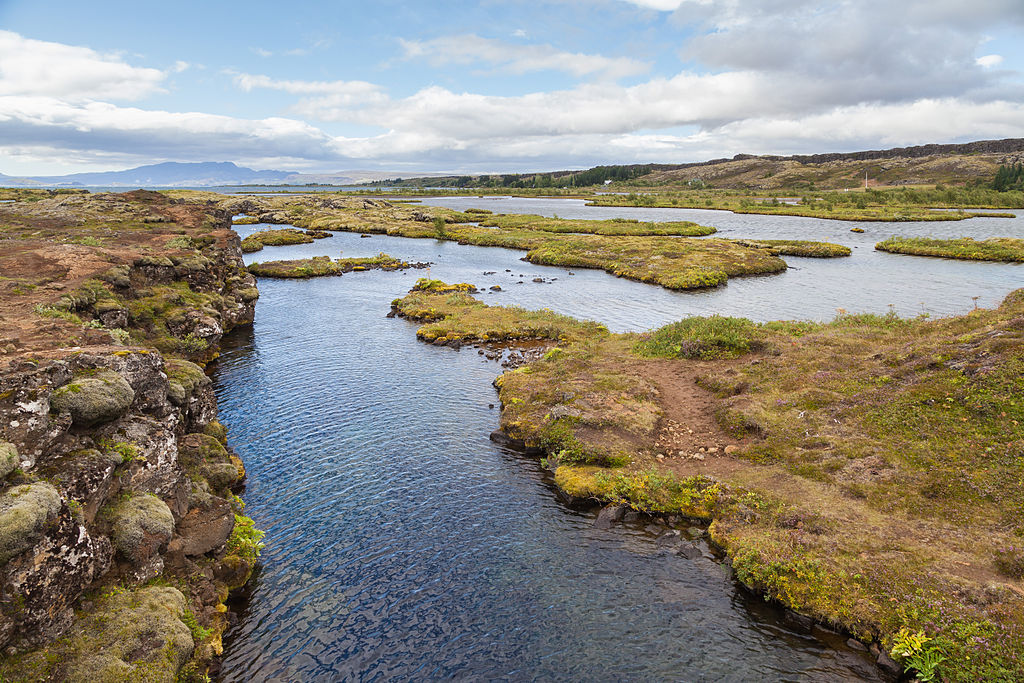 Diego Delso, CC BY-SA 4.0, Wikimedia Commons
Diego Delso, CC BY-SA 4.0, Wikimedia Commons
Snorkeling the Rift
It occupies an area of approximately 600 by 200 meters, and is known as one of the most unique phenomena on Earth. Snorkeling in Silfra Rift is one of Iceland’s most awesome experiences.
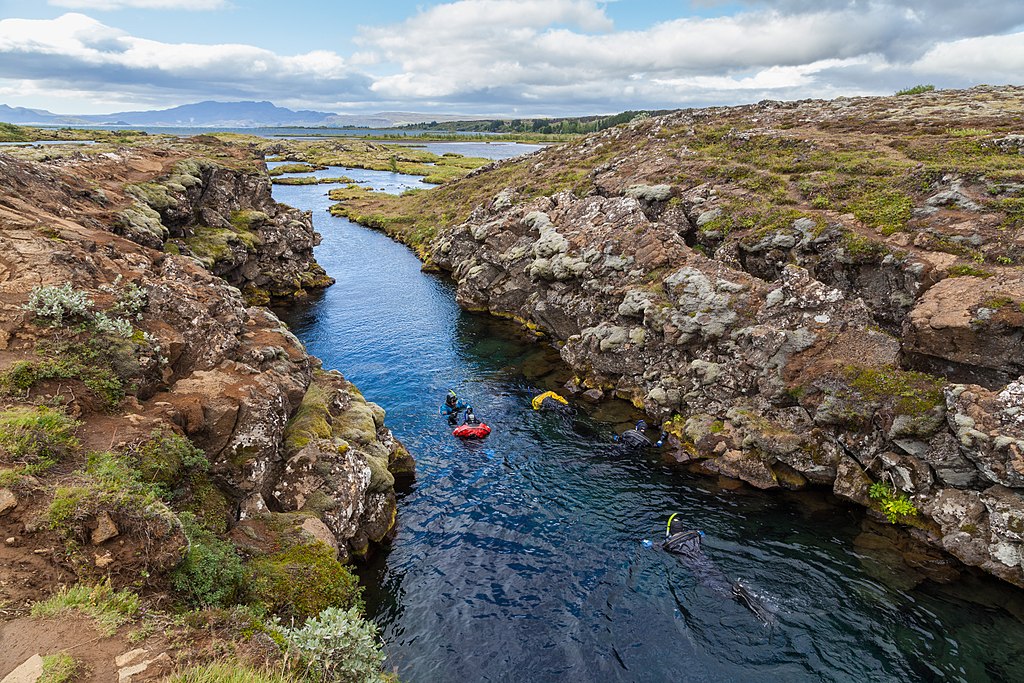 Diego Delso, CC BY-SA 4.0, Wikimedia Commons
Diego Delso, CC BY-SA 4.0, Wikimedia Commons
Caño Cristales
Caño Cristales, located in Colombia, is known as the river of five colors. It is famous for its multi-colored waters that change in color and vibrance throughout the year.
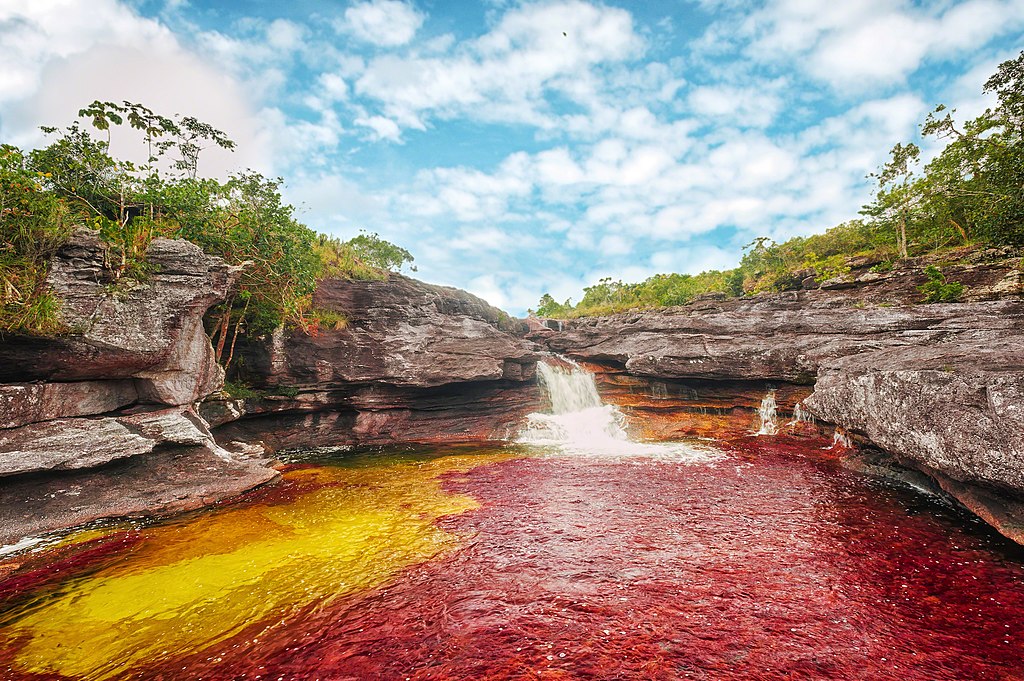 Mario Carvajal, CC BY 3.0, Wikimedia Commons
Mario Carvajal, CC BY 3.0, Wikimedia Commons
What Makes It Colorful
The waters change colors by the presence of different types of algae and minerals. The water temperatures and sunlight activate vibrancy levels, so on a good day the water is extra colorful.
Jellyfish Lake
Jellyfish Lake in Palau is one of the South Pacific’s most surreal destinations. Here, visitors can literally dive into a dreamlike world—swimming among millions of harmless golden jellyfish that drift gracefully through the water like living lanterns.
 Lukas from Munich, CC BY 2.0, Wikimedia Commons
Lukas from Munich, CC BY 2.0, Wikimedia Commons
Millions of Jellyfish
In 2005, there were an estimated 30 million jellyfish living in the lake. The majority of the jellyfish in the lake do not sting, as there are no natural predators in the lake so they have lost their ability to sting.
Blood Falls
In the Antarctica, among stark white snowy mountains is a small waterfall that pours out deep-red water, making it a creepy natural phenomenon.
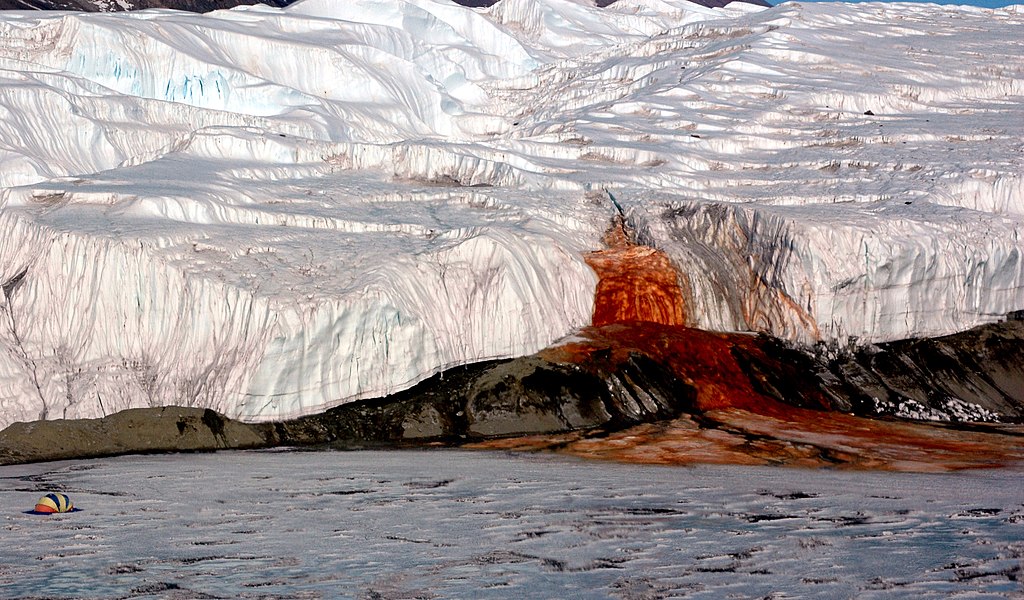 National Science Foundation/Peter Rejcek, Wikimedia Commons
National Science Foundation/Peter Rejcek, Wikimedia Commons
What Makes It Red
The red coloring is due to oxidized iron in brine saltwater, the same process that gives the iron a dark red color when it rusts.
 Jill Mikucki/University of Tennessee Knoxville, CC BY 2.0, Wikimedia Commons
Jill Mikucki/University of Tennessee Knoxville, CC BY 2.0, Wikimedia Commons
Painted Hills
The Painted Hills are located in Oregon, and they are best known for their natural painted design that shows up in vibrant yellows, reds, golds, and blacks.
What Makes Them Colorful
Minerals embedded in the rock give these hills their mesmerizing rainbow tones. As sunlight and moisture shift throughout the day, the colors seem to change right before your eyes—creating a landscape that never looks quite the same twice.
Source: 1



